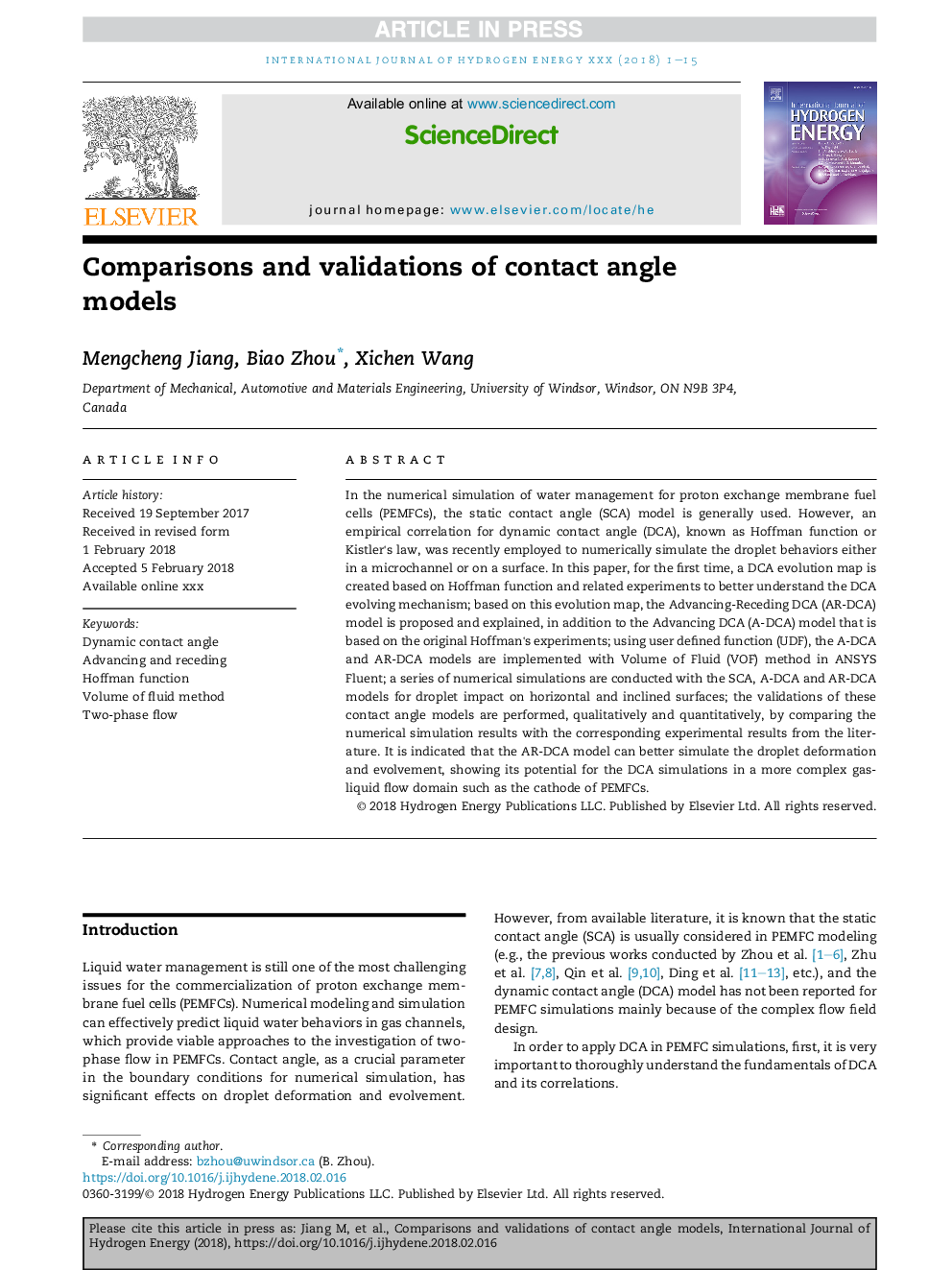| Article ID | Journal | Published Year | Pages | File Type |
|---|---|---|---|---|
| 7707089 | International Journal of Hydrogen Energy | 2018 | 15 Pages |
Abstract
In the numerical simulation of water management for proton exchange membrane fuel cells (PEMFCs), the static contact angle (SCA) model is generally used. However, an empirical correlation for dynamic contact angle (DCA), known as Hoffman function or Kistler's law, was recently employed to numerically simulate the droplet behaviors either in a microchannel or on a surface. In this paper, for the first time, a DCA evolution map is created based on Hoffman function and related experiments to better understand the DCA evolving mechanism; based on this evolution map, the Advancing-Receding DCA (AR-DCA) model is proposed and explained, in addition to the Advancing DCA (A-DCA) model that is based on the original Hoffman's experiments; using user defined function (UDF), the A-DCA and AR-DCA models are implemented with Volume of Fluid (VOF) method in ANSYS Fluent; a series of numerical simulations are conducted with the SCA, A-DCA and AR-DCA models for droplet impact on horizontal and inclined surfaces; the validations of these contact angle models are performed, qualitatively and quantitatively, by comparing the numerical simulation results with the corresponding experimental results from the literature. It is indicated that the AR-DCA model can better simulate the droplet deformation and evolvement, showing its potential for the DCA simulations in a more complex gas-liquid flow domain such as the cathode of PEMFCs.
Related Topics
Physical Sciences and Engineering
Chemistry
Electrochemistry
Authors
Mengcheng Jiang, Biao Zhou, Xichen Wang,
